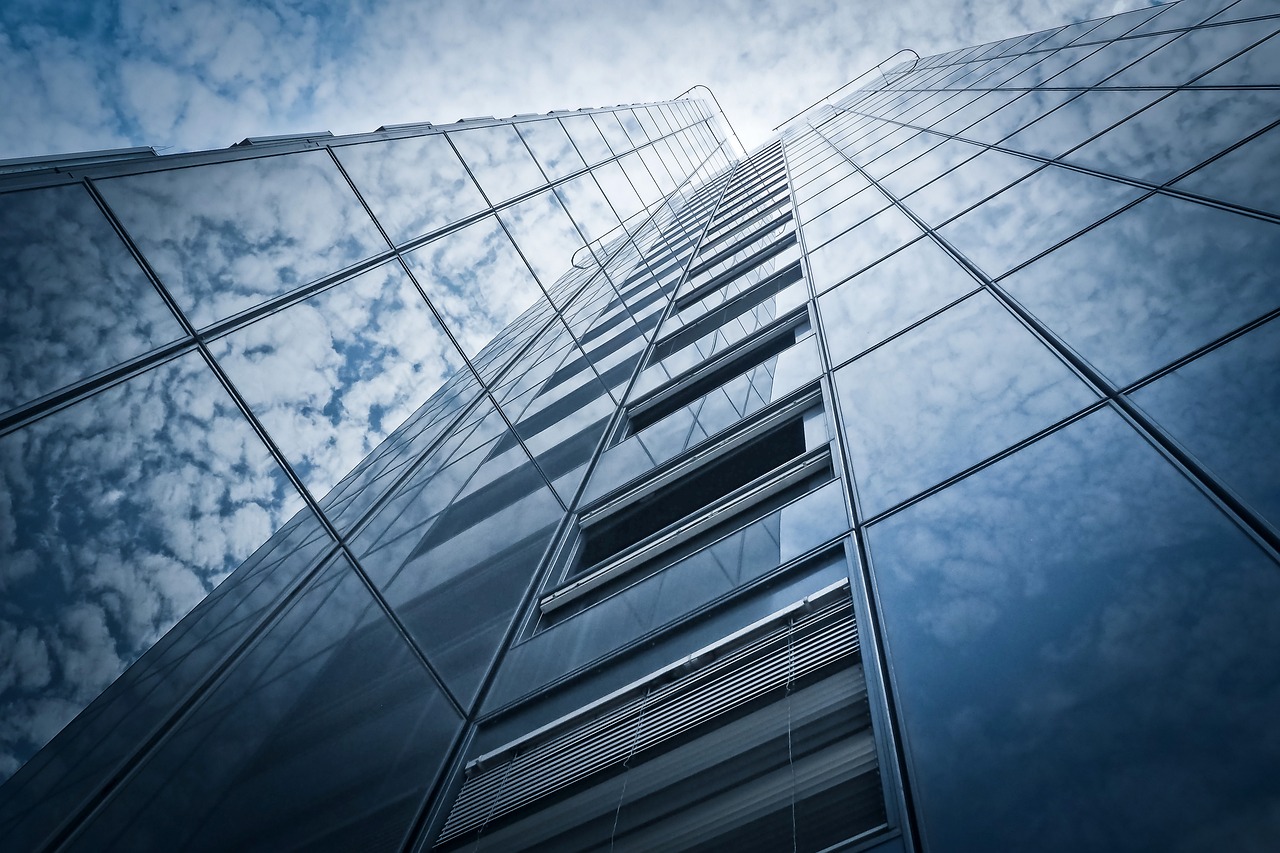In today’s era, the quest for greener living has become a crucial mission for us all, and understanding how to measure the sustainability of a building is a significant step towards that goal. When we dive into sustainability metrics, we look at energy efficiency, water usage, carbon footprint, and the materials utilized in construction. It’s essential for us to consider these factors to ensure our buildings not only meet immediate needs but also nurture the environment for future generations. By assessing these elements, we gain insights into how our built environments can harmoniously coexist with the natural world, guiding us to make more responsible and eco-friendly choices. How do you measure the sustainability of a building? This question might pop up in our minds more frequently as we witness the growing emphasis on eco-friendliness and sustainable development. Buildings, after all, are a significant part of our environment. They consume vast amounts of energy, water, and materials and generate substantial amounts of waste. So, understanding the sustainability of a building isn’t just crucial for environmental reasons; it’s beneficial for our health, wellbeing, and even our wallets in the long run. Let’s delve deeper to understand the various aspects that help us gauge the sustainability of a building.

Understanding Sustainability in Buildings
Before we jump into measurements, let’s clarify what we mean by sustainability in buildings. Building sustainability revolves around designing, constructing, and operating buildings in ways that reduce negative impacts on the environment and increase the health and well-being of the occupants. This includes efficient energy and water use, reduced waste, the use of sustainable or recycled materials, and considerations for the building’s overall impact on the health and comfort of its users.
Why Is Sustainability Important?
The importance of sustainable buildings cannot be overstated. Here are some reasons why sustainability should be at the forefront of our building designs:
- Environmental Impact: Sustainable buildings reduce greenhouse gases and pollution.
- Energy Efficiency: They consume less energy, which translates into cost savings.
- Health Benefits: Improved indoor air quality and natural light can enhance occupant health and well-being.
- Economic Benefits: Sustainable buildings often have higher market value and lower operating costs.
Key Metrics for Measuring Sustainability
To measure the sustainability of a building, we need to look at various metrics and criteria. These metrics are usually divided into different categories: energy efficiency, water usage, material efficiency, indoor environmental quality, and waste management.
Energy Efficiency
Energy efficiency is one of the most critical aspects of a building’s sustainability. The goal is to minimize energy consumption through various design, construction, and operational strategies.
Energy Consumption
Energy consumption includes all the energy used by the building, including heating, cooling, lighting, and operating appliances and equipment. Here are some ways to measure and improve energy efficiency:
- Energy Star Rating: Look for appliances and systems that are Energy Star-rated.
- HVAC Systems: Use high-efficiency heating, ventilation, and air conditioning systems.
- Insulation: Ensure the building’s insulation is adequate to reduce the need for heating and cooling.
- Lighting: Use energy-efficient lighting, like LEDs.
Renewable Energy Sources
Incorporating renewable energy sources can significantly reduce a building’s carbon footprint. Consider these options:
- Solar Panels: Installing solar panels to generate electricity.
- Wind Turbines: If applicable, wind turbines can be a great source of renewable energy.
- Geothermal Heating and Cooling: Utilize the earth’s constant temperature to regulate building temperature.
| Metric | Description | Example Solutions |
|---|---|---|
| Energy Star Rating | Rating for energy-efficient appliances | Use Energy Star appliances |
| HVAC Systems | Heating, ventilation, and air conditioning | Install high-efficiency HVAC systems |
| Insulation | Material that reduces heat loss | Use quality insulation materials |
| Lighting | Efficient use of lighting | Install LED lights |
| Renewable Energy Sources | Use of renewable energy | Solar panels, wind turbines, geothermal systems |
Water Usage
Water efficiency is another critical aspect of building sustainability. Efficient water use reduces the strain on our freshwater resources and can lower utility bills.
Water Consumption
Monitoring water consumption helps us identify areas for improvement. Key strategies include:
- Low-Flow Fixtures: Install low-flow faucets, showers, and toilets to conserve water.
- Water Recycling Systems: Use greywater systems to recycle water for irrigation and other non-potable uses.
- Rainwater Harvesting: Collect and store rainwater for use in landscaping and other applications.
| Metric | Description | Example Solutions |
|---|---|---|
| Low-Flow Fixtures | Fixtures that use less water | Low-flow faucets, showers, and toilets |
| Water Recycling Systems | Systems that recycle greywater | Greywater systems for irrigation |
| Rainwater Harvesting | Capturing and storing rainwater | Rainwater collection systems for landscaping |
Material Efficiency
Material efficiency in sustainable buildings is achieved through the use of sustainable materials and construction methods that reduce waste.
Sustainable Materials
Choosing sustainable materials can significantly lower the environmental impact of a building. Look for materials that are:
- Recycled: Using recycled materials reduces the need for new resources.
- Sustainably Sourced: Materials like bamboo or certified wood that are renewable and sourced responsibly.
- Low-Emission: Materials that emit fewer volatile organic compounds (VOCs) improve indoor air quality.
Construction Methods
Adopting sustainable construction methods also contributes to material efficiency. Consider these approaches:
- Prefabrication: Prefabricated building components can reduce waste and improve efficiency.
- Waste Management Plans: Develop plans to manage and recycle construction waste effectively.
- Building to Last: Design buildings for longevity, reducing the need for frequent renovations or demolitions.
| Metric | Description | Example Solutions |
|---|---|---|
| Recycled Materials | Using materials with recycled content | Recycled steel, reclaimed wood |
| Sustainably Sourced Materials | Responsibly sourced renewable materials | Bamboo, FSC-certified wood |
| Low-Emission Materials | Materials with low VOC emissions | Low-VOC paints, adhesives |
| Prefabrication | Pre-made building components | Prefabricated panels and modules |
| Waste Management Plans | Strategies for managing construction waste | Recycling, reusing construction materials |
| Building Longevity | Designing for long-term use | Durable materials and construction methods |
Indoor Environmental Quality
The quality of the indoor environment significantly impacts the health and well-being of the occupants. Several factors contribute to indoor environmental quality, including air quality, natural light, and thermal comfort.
Air Quality
Good indoor air quality is essential for a healthy living and working environment. To improve air quality, consider these measures:
- Ventilation: Ensure proper ventilation to circulate fresh air.
- Air Purification: Use air purifiers to reduce indoor pollutants.
- Low-Emission Materials: Choose building materials and finishes with low emissions of harmful substances.
Natural Light and Views
Access to natural light and outdoor views can enhance the well-being and productivity of occupants. Promote natural light by:
- Window Placement: Strategically placing windows to maximize daylight.
- Skylights: Installing skylights to bring in additional natural light.
- Light Shelves: Using light shelves to reflect daylight deeper into the interior spaces.
| Metric | Description | Example Solutions |
|---|---|---|
| Ventilation | Ensures the circulation of fresh air | Mechanical ventilation systems |
| Air Purification | Reduces indoor pollutants | HEPA air purifiers |
| Low-Emission Materials | Minimizes the release of harmful substances | Low-VOC paints, sealants |
| Natural Light | Utilizes daylight to enhance indoor lighting | Large windows, skylights |
| Views | Provides visual access to the outdoors | Strategically placed windows, building orientation |
Waste Management
Effective waste management during construction and operation is vital to the sustainability of a building. By reducing, reusing, and recycling waste, we can minimize the environmental impact.
Construction Waste
Effective management of construction waste can significantly reduce the environmental impact of building projects. Strategies include:
- Waste Audit: Conduct audits to identify waste streams and develop reduction plans.
- Recycling: Set up on-site recycling programs for materials like metal, wood, and concrete.
- Reusing Materials: Find ways to reuse materials in the building or throughout the construction process.
Operational Waste
Ongoing waste management during the building’s operational phase is also essential. Consider these strategies:
- Recycling Programs: Implement recycling programs for occupants.
- Composting: Set up composting systems for organic waste.
- Waste Reduction: Encourage practices to reduce waste generation, such as using reusable containers and materials.
| Metric | Description | Example Solutions |
|---|---|---|
| Waste Audit | Identifies waste streams and develops plans | Conduct site audits and implement reduction strategies |
| Recycling | Recycles materials instead of sending them to landfill | On-site recycling programs for metal, wood, concrete |
| Reusing Materials | Reuses materials in the building or construction | Reuse of reclaimed materials, leftover building supplies |
| Recycling Programs | Ongoing waste management | Building-wide recycling programs |
| Composting | Manages organic waste | Implementing building-wide composting systems |
| Waste Reduction Practices | Encourages reduction of waste generation | Using reusable containers and materials |
Certification Systems for Sustainable Buildings
To standardize the measurement of sustainability in buildings, various certification systems have been developed. These certifications help us evaluate and recognize the sustainability performance of our buildings.
LEED (Leadership in Energy and Environmental Design)
LEED is one of the most widely recognized and used green building certification systems in the world. It provides a framework for healthy, highly efficient, and cost-saving green buildings.
LEED Certification Levels
LEED certification is available for all building types and offers four certification levels:
- Certified: Basic level of achievement.
- Silver: Recognizes higher levels of performance.
- Gold: Indicates significant commitment to sustainability.
- Platinum: The highest level of LEED certification.
| Certification Level | Description |
|---|---|
| Certified | Basic level achievement |
| Silver | Higher level of performance |
| Gold | Significant commitment to sustainability |
| Platinum | Highest level of LEED certification |
BREEAM (Building Research Establishment Environmental Assessment Method)
BREEAM is another leading sustainability assessment method for buildings. It covers a wide range of building types and assesses the performance across several different categories.
BREEAM Rating Levels
BREEAM ratings offer a credible measure of a building’s performance:
- Pass
- Good
- Very Good
- Excellent
- Outstanding
| Rating Level | Description |
|---|---|
| Pass | Basic adherence to criteria |
| Good | Good standard of sustainability |
| Very Good | High standard of performance |
| Excellent | Very high sustainability |
| Outstanding | Exceptional performance |
Other Certification Systems
Green Globes
Green Globes is a versatile and practical certification that applies to both new constructions and existing buildings. It assesses energy and environmental performance through a detailed evaluation process.
| Certification System | Description |
|---|---|
| Green Globes | Practical certification for new and existing buildings |
| Living Building Challenge | Stringent certification focusing on health and sustainability |
Living Building Challenge
The Living Building Challenge is one of the most rigorous sustainability certifications. It calls for buildings to operate as cleanly, beautifully, and efficiently as nature’s architecture.
Case Studies of Sustainable Buildings
Learning from the examples of buildings that have achieved high standards of sustainability can provide us with valuable insights.
The Edge, Amsterdam
The Edge is often hailed as one of the greenest buildings in the world. It features an array of sustainable practices, including:
- Energy Efficiency: The building integrates solar panels and uses innovative energy storage solutions.
- Smart Technology: Uses smart systems to monitor and control energy use.
- Materials: Construction includes the use of sustainable materials and waste reduction strategies.
One Central Park, Sydney
Another exemplary sustainable building is One Central Park in Sydney. Key features include:
- Green Walls: The building boasts vertical gardens that contribute to air purification and insulation.
- Water Recycling: Implements advanced water recycling systems.
- Renewable Energy: Equipped with solar panels and other renewable energy sources.

Conclusion
As we have journeyed through understanding how to measure the sustainability of a building, we see it is a multi-dimensional approach requiring consideration of energy and water usage, material efficiency, indoor environmental quality, and waste management. Not only does sustainability impact our environment, but it also improves our quality of life and can even be economically beneficial. By adhering to established certification systems and learning from successful case studies, we can strive towards creating buildings that are not just structures of concrete and steel but living, breathing spaces in harmony with our environment. Sustainable buildings are, quite literally, the bedrocks of a sustainable future for all of us. Let’s embrace this change together, for our better future.



